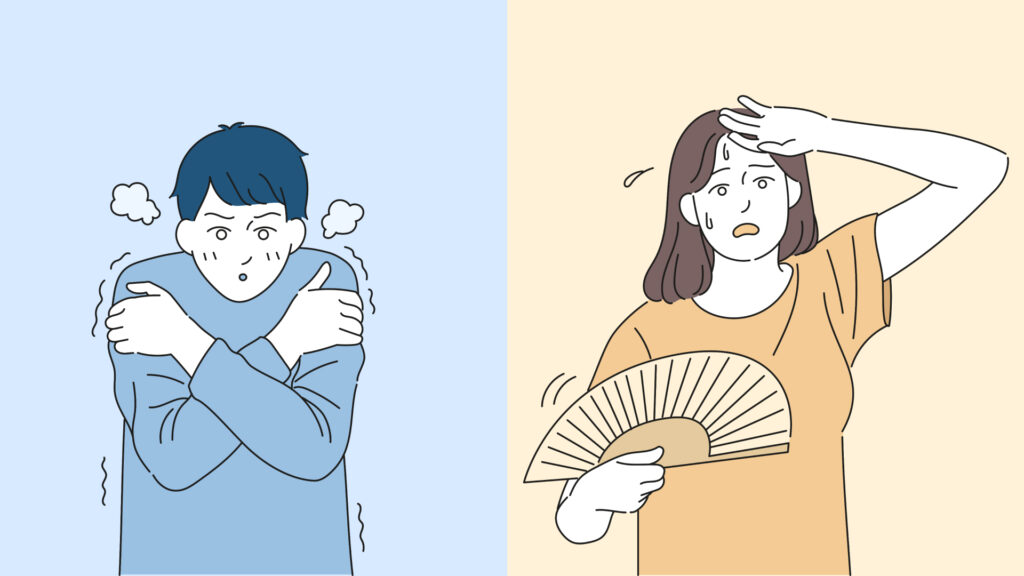Great ideas often receive violent opposition from mediocre minds.
– Albert Einstein (1879-1955), German naturalized Swiss and American physicist, winner of the Physics Nobel Prize in 1921.
Every year winter brings with it a new wave of declarations from climate change skeptics, which cannot reconcile the physical perception of cold with the intellectual understanding of a rising global temperature. Global effects and intimate perceptions for someone have no distinctions. In the US such a situation is, as often happens with the US, extreme. Already in 2014, during the Obama presidency, John Brown reported that “Virtually no Republican in Washington accepts climate change science”, and the Florida senator Marco Rubio declared that “I do not believe that human activity is causing these dramatic changes to our climate the way these scientists are portraying it”. The Trump era did not make it better. Tweets such as “The weather has been so cold for so long that the global warmers HOAXSTERS were forced to change the name to climate change to keep $flow” or (my favourite) “The concept of global warming was created by and for the Chinese” have, for the last four years, been broadcast to the world.
To explain the thorny question of why if it’s cold it can also be hot, let’s take an example that we can all relate to: a football match. Let’s talk about AC Milan, our local football team. They could be considered like Manchester United in the UK, or one of the main NFL teams in the US, albeit we are speaking about soccer here, not American football.
It’s April the 21st 2018. AC Milan loses, at San Siro (our city stadium), 0 to 1 against Benevento, at the time at the bottom of the league and on the verge of relegation to Division One. An embarrassing afternoon that led the angry fans to declare the match “A shameful plaque in the history of Milan” and the then coach Gennaro Gattuso to describe it as “A profound disgrace”. The underdog team from Campania took the lead in the 29th minute with a goal from Pietro Iemmello and experienced the thrill of beating one of the strongest international football teams on home turf, and the rest is history. Now, did that single event change the outcome of the season? Of course not. AC Milan ended the season with 72 points, just qualifying – after controversies and appeals – for the Europa League, while Benevento ended with 21 points and were inexorably relegated to Division One. That single goal didn’t change the fact that Benevento was far behind Milan, and winning that match didn’t change the overall standings by much.
The same thing goes for climate and weather. Climate is the general trend of temperatures over years, centuries and millennia. Exactly like the general classification of Premier League tells you how one team is doing compared to the others, climate tells you if year after year, century after century, we are getting warmer or cooler than in previous years. The weather, on the other hand, is what happens to us every day, it varies from hour to hour, day to day, season to season. Weather is the single game, it’s the violent storm or the few days of extreme weather or the lonely goal of Benevento. But just as that goal did not indicate that Benevento would win the championship, the single Siberian storm, the sudden snowfall or the “Beast from the East”, taken individually, do not indicate the general direction. It’s the trend that matters.
And the trends indicate that greenhouse gases (carbon dioxide, methane, nitrous oxide) have been increasing for decades, and with them the temperatures. The main reasons the Earth has a mild temperature – neither too cold nor too hot – are, on one hand, greenhouse gases in our atmosphere that keep the heat inside, and, on the other hand, natural mechanisms that deal with removing, recycling and storing excessive CO2 in sediments, rocks, soil and plants.
Average amount of atmospheric CO2 measured by the Mauna Loa Observatory, Hawaii, from 1960 to present. Source: https://www.esrl.noaa.gov/gmd/ccgg/trends/
Without enough greenhouse gases, Earth would be more like Mars, colder and more inhospitable. But with too many greenhouse gases we’d be like Venus, way too hot. The problem is that, at the moment, we produce more CO2 than our system can naturally absorb.
The gathered evidence about an increase in atmospheric CO2 and other greenhouse gases are beyond any reasonable doubt. You can check the daily CO2 trends by yourself on the NASA or NOAA websites, to name two of the most authoritative.
And just to be accurate on this point, excess greenhouse gas emissions, and in particular CO2, are primarily due to human beings. To quote the NASA Global Climate Change Program ” Over the past 170 years, human activities have increased CO2 concentrations by 47% compared to pre-industrial concentrations in 1850. This increase is more than the natural increase in CO2 that has occurred over the last 20,000 years (from the last ice age until 1850, CO2 increased from 185 to 280 parts per million, while from 1850 to the present we have increased from 280 to 415)”.
To conclude and remark on why if it’s cold it can also be hot, here below an updated graph of global temperature increase from 1880 to 2021. The average annual temperatures (the gray dots) go up and down (the individual matches, Benevento winning against AC Milan), but the overall trend (the black line) goes up inexorably (more or less as inexorably Benevento went down in division one, and AC Milan maintains its position high in the League).
Global temperature increase (expressed as anomaly in degrees) from 1880 to present. Note: temperature anomaly is an estimate of the global average temperature difference from a baseline period of 1951 to 1980. Source: https://climate.nasa.gov/vital-signs/global-temperature/
Sources:
The literature on climate change is enormous. The suggestion is, before diving head first into a socio-political debate of such enormity and depth, to learn its scientific basis first. If you want a smattering of understanding as to how CO2 molecules (and in general all greenhouse gases) create that thermal blanket effect around the Earth we suggest this video (short and nice) by Minute Earth. If instead you’d like to have a more physical and less geological view of how the greenhouse effect works, we really liked this TED video (a bit psychedelic and complex though). Otherwise, to understand the complexity of the geological carbon cycle, and why the Earth is not Venus, we suggest this beautiful video lecture by Daniel Schrag, professor of climatology and environmental engineering at Harvard and one of the leading scholars of the geochemical mechanisms that regulate the delicate balance of CO2 on planet Earth. Instead, if you want to go head-long into the facts and know what is the real evidence for climate warming (monitored increase of temperatures, monitored warming of the oceans, reduction of glaciers, sea level rise, decrease of polar ice caps, ocean acidification) then let yourself be inspired by the NASA portal on global climate change, which summarizes all of the most solid evidence on the subject.
Over The Pop
Al Gore – An Inconvenient Truth | Not the best, but certainly the most famous documentary on climate change. Gore deserves credit for bringing the problem to the big screens before it started to be talked about everywhere. There is also a sequel, An Inconvenient Sequel, mainly focused on Republicans and Trump’s climate change denial.
Fridays For Future | If you are under 20 this is the place to start feeling part of the global movement founded by Greta Thunberg.
It’s freezing in LA | An underground, independent magazine focused exclusively on climate change. Completely green and aesthetically beautiful.
Snowpiercer | A comic book, a movie and a Netflix series in which climate change goes in the opposite direction, where the Earth ends up completely frozen. One of the main goals of the movie is also to discuss – without too many metaphors – how this change could introduce a new social order of rich and poor (the series in my opinion is better than the movie, even if you can’t figure out why they have to be on a train endlessly circling the planet – just let that one pass).
 This article appeared for the first time on our fortnightly newsletter. To keep up with the scientific debate, join the community of Monnalisa Bytes and to receive a preview of all our newsletters subscribe here!
This article appeared for the first time on our fortnightly newsletter. To keep up with the scientific debate, join the community of Monnalisa Bytes and to receive a preview of all our newsletters subscribe here!
